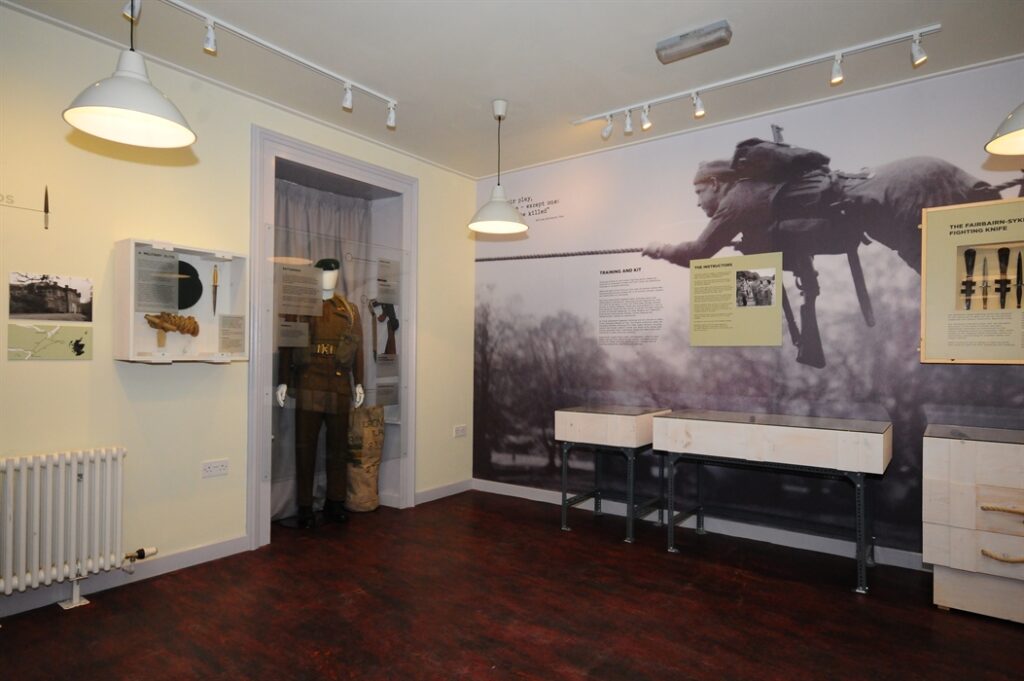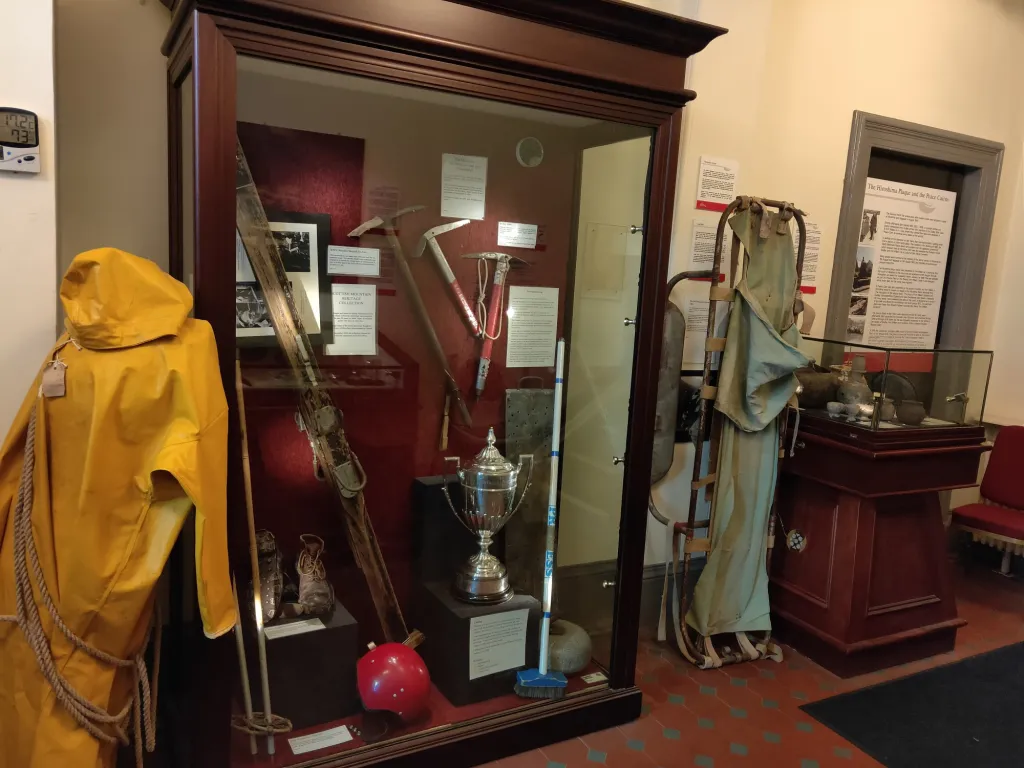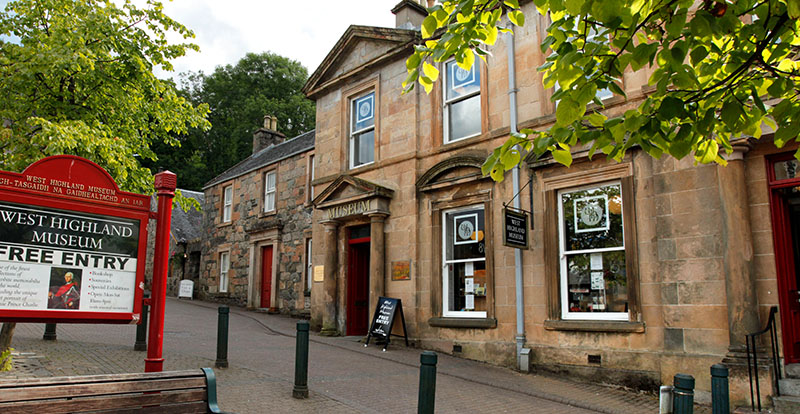In the heart of Fort William, at the foot of Scotland’s highest mountain, lies a remarkable institution dedicated to preserving the history, culture, and traditions of the Highlands: the West Highland Museum. Housed in a historic building on Cameron Square, this small but richly curated museum offers a fascinating journey through centuries of Highland life. From the Jacobite uprisings and Bonnie Prince Charlie to local industries, folklore, and the everyday experiences of Highland people, the West Highland Museum presents a tapestry of stories that resonate far beyond its walls.
For nearly a century, it has been a focal point for both locals and visitors, offering insight into the identity of the West Highlands and its enduring influence on Scottish culture.

Founding and Early History
The West Highland Museum was founded in 1922, originally established to collect and preserve items relating to the history and heritage of Lochaber and the wider West Highlands. At that time, interest in Scotland’s past—particularly the Jacobite era—was gaining momentum, spurred by both academic research and romantic portrayals in art and literature.
Initially, the museum’s collection was modest, but it grew rapidly as donations poured in from local families, historians, and collectors. Its founding principles were rooted in community engagement: the aim was to protect and interpret the tangible heritage of the Highlands for future generations. Over the decades, the museum has remained true to this mission, even as it has expanded and modernised its exhibitions.

The Building
The museum is housed in a historic building in Cameron Square, Fort William’s central hub. The structure itself is part of the story—it has served various civic purposes, including as a meeting place and financial offices, before becoming home to the museum. Its traditional Highland architecture, with whitewashed walls and slate roofs, reflects the town’s heritage and provides a fitting backdrop for the treasures within.
The Jacobite Collection
One of the museum’s most celebrated features is its Jacobite Collection, considered one of the finest in the world. The Jacobite movement, which sought to restore the Stuart dynasty to the British throne, culminated in the dramatic 1745 Rising, launched by Prince Charles Edward Stuart—better known as Bonnie Prince Charlie.
Highlights of the collection include:
- Personal belongings of Bonnie Prince Charlie, such as clothing, weapons, and household items, offering an intimate glimpse into the life of this romantic and controversial figure.
- Jacobite weapons and military equipment, from pistols to swords, used during the uprisings.
- Original documents and proclamations, including orders and correspondence that illustrate the political and military strategies of the time.
- Artwork and iconography, showing how the Jacobites were remembered and mythologised in later years.
This collection not only sheds light on the events of 1745–46, but also explores the cultural memory of the Jacobite cause, which continues to inspire art, literature, and tourism across Scotland.
Life in the Highlands
Beyond the Jacobite material, the West Highland Museum is deeply committed to showing the daily lives of Highland people across centuries. Exhibits cover themes such as:
- Domestic life: Traditional Highland furniture, kitchenware, and clothing illustrate how families lived, cooked, and worked in often harsh conditions.
- Crafts and trades: Displays highlight skills such as weaving, fishing, and crofting, which sustained communities in rural areas.
- Military service: Many Highlanders served in the British Army, and the museum features uniforms, medals, and memorabilia from the Napoleonic Wars through to the 20th century.
- Religion and folklore: The role of the church, superstitions, and traditional stories are represented through artefacts, books, and oral histories.
Together, these exhibitions present a vivid portrait of resilience and adaptability, showing how Highlanders balanced tradition with the demands of changing times.
The Commando Exhibition
Another highlight of the museum is its Commando Exhibition, which focuses on the training and operations of the British Commandos during the Second World War. Fort William and the surrounding Lochaber region played a vital role in the commandos’ preparation, with rugged terrain that was perfect for developing the skills required for wartime operations.
Exhibits include:
- Original uniforms, weapons, and training equipment.
- Photographs and films documenting the commando presence in the Highlands.
- Personal stories of the soldiers who trained in the region and went on to serve in daring operations around the world.
This exhibition is a powerful reminder of how the Highlands contributed to global events and how the landscape itself shaped military history.
Folklore, Archaeology, and Natural History
The museum’s collection extends beyond human history to embrace folklore and the natural environment. Displays explore local legends, superstitions, and tales of Highland giants, fairies, and spirits, reflecting the region’s rich oral tradition.
Archaeological finds from the area, including tools and relics from prehistoric settlements, provide evidence of human habitation dating back thousands of years. In addition, natural history exhibits showcase the flora and fauna of the Highlands, connecting cultural history with the wider ecosystem.
Community Role and Education
The West Highland Museum is more than a collection of artefacts; it is a living institution with deep ties to the local community. It hosts lectures, educational programmes, and school visits, ensuring that younger generations develop a strong connection to their heritage.
The museum also supports research, with archives and collections available to scholars studying Jacobite history, Highland culture, and local genealogy. Its role as a hub for learning makes it invaluable not only to visitors but also to academics and local historians.
Visitor Experience
Visiting the West Highland Museum is a rewarding experience for all ages. Admission is traditionally free, reflecting the museum’s community ethos, though donations are encouraged to support its work.
The galleries are laid out in a way that allows exploration of both major historical events and everyday life. Visitors can move seamlessly from the drama of the Jacobite uprisings to the quiet intimacy of a Highland home, gaining a holistic understanding of the region. Friendly and knowledgeable staff are always on hand to answer questions, while interactive exhibits and storytelling displays bring the history to life.
The museum’s central location in Fort William makes it easily accessible, and it is often included as part of broader itineraries that take in Ben Nevis, the Glenfinnan Viaduct, and the Jacobite Steam Train.
Challenges and Preservation
Like many independent museums, the West Highland Museum faces challenges, particularly in securing funding and maintaining its historic building. Yet it has responded with creativity, launching community fundraising campaigns, seeking grants, and developing digital resources to reach wider audiences. The preservation of delicate artefacts, especially textiles and paper documents, is an ongoing task requiring specialised care.
Despite these challenges, the museum has thrived, consistently attracting visitors from across the globe and earning a reputation as one of Scotland’s finest small museums.
Why the West Highland Museum Matters
The West Highland Museum is significant for several reasons:
- It preserves a world-class Jacobite collection, vital for understanding a formative period in Scottish and British history.
- It captures the daily lives of Highland people, ensuring that local culture is remembered alongside grand political events.
- It links the region to global history through exhibitions such as the Commando Gallery.
- It serves as a community anchor, bringing people together through education and heritage.
Most importantly, the museum demonstrates that history is not confined to large national institutions. In a modest building in Fort William, the story of the Highlands is told with depth, passion, and authenticity.
Conclusion
The West Highland Museum is a treasure trove of Highland history, combining local detail with national and international significance. From Jacobite relics to commando training, from folklore to domestic life, its collections reveal the diverse threads that make up the Highland story.
For visitors to Fort William, the museum offers more than a diversion—it is a gateway into the culture, struggles, and spirit of the West Highlands. For locals, it is a guardian of memory and identity. Nearly a century after its founding, the West Highland Museum continues to inspire, educate, and connect, reminding us that the past is never far away in the Highlands.

